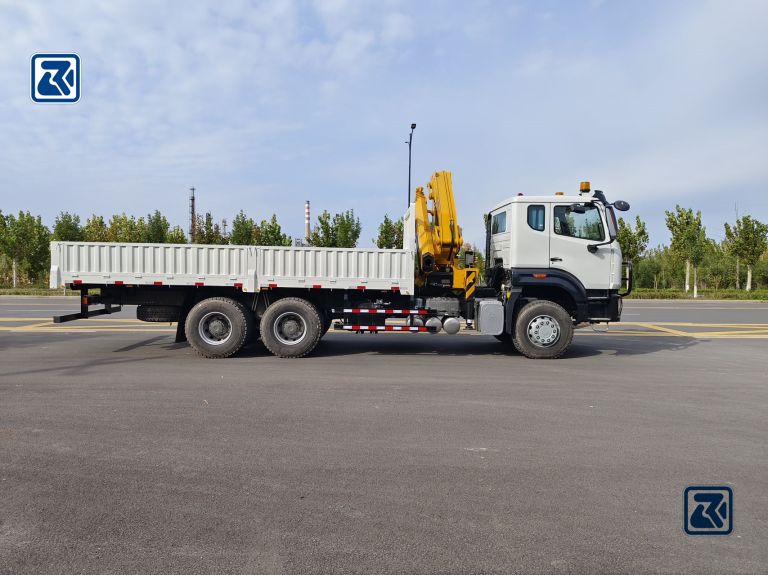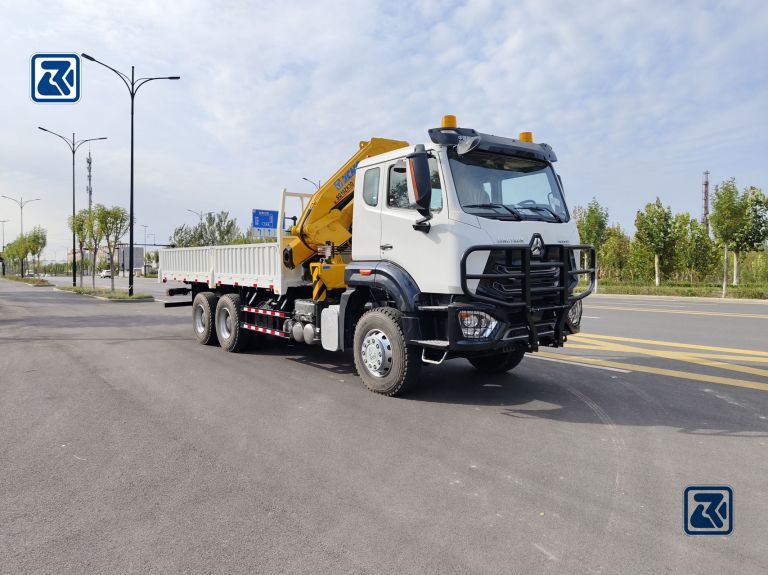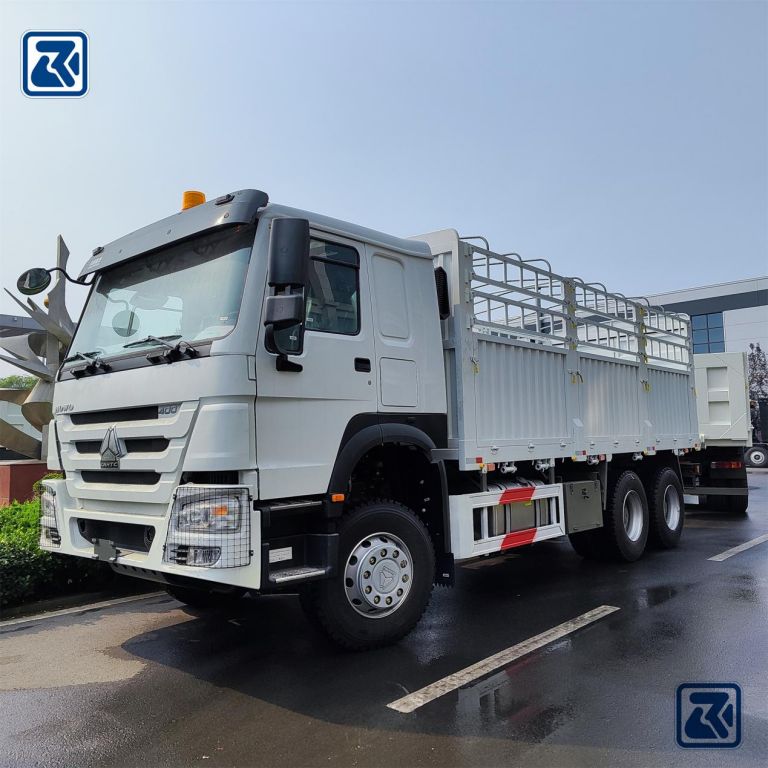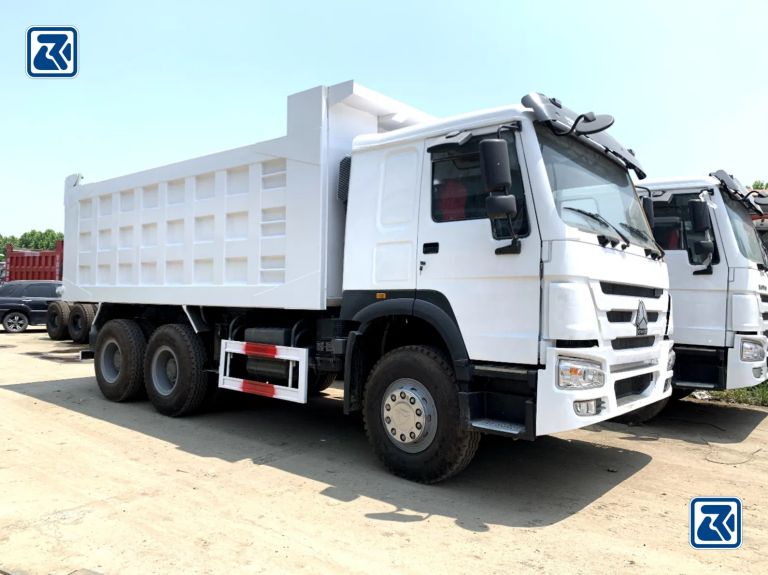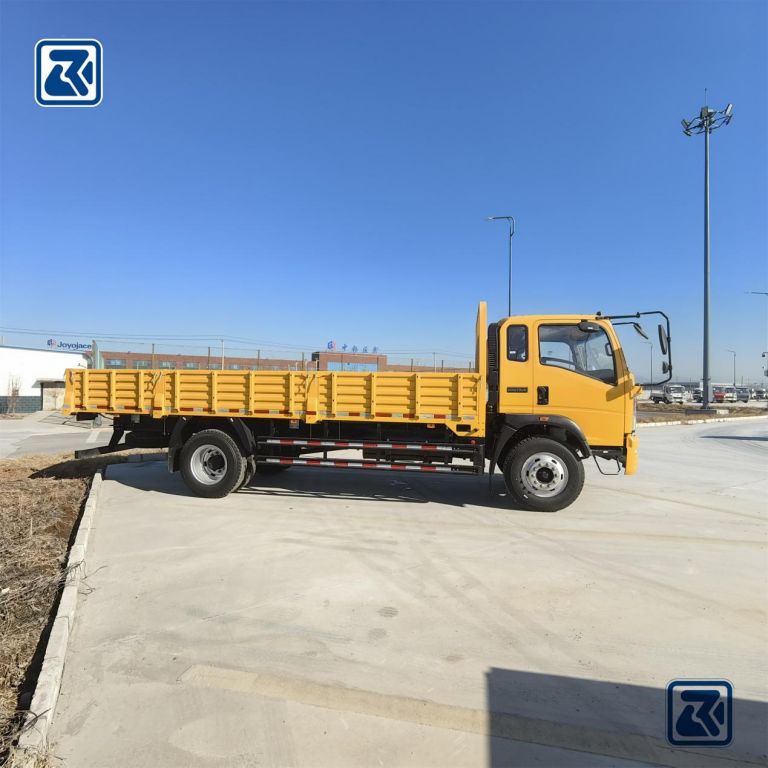The HOWO crane is an indispensable piece of equipment in the construction and logistics industries. It is designed to provide efficient, reliable, and versatile lifting services for a wide range of scenarios, from the transportation of heavy loads to the installation of complex building structures.
The versatility and load-carrying capacity of the HOWO crane makes it ideal for solving heavy load-handling problems.
The hydraulic system is a key component of the HOWO crane, providing power and driving the crane’s operations. The following are key points for maintaining the hydraulic system:
Check and change the hydraulic fluid regularly
Check the filters
Check seals
Check pipes and fittings
Perform regular maintenance procedures
The key role of the hydraulic system in crane operation includes:
Providing power
Improving safety
Regular maintenance not only extends the service life of the HOWO crane and reduces the failure rate, but it also ensures optimum performance levels in all types of operations, protects the lives of operators, and reduces long-term operating costs.
Table of Contents
the components and functions of a hydraulic system
A hydraulic system is an automated system that relies on a fluid for energy transfer. The following are a few of the main components of a hydraulic system:
Hydraulic Pump: The hydraulic pump is the power source of the hydraulic system, which drives the oil circulation by converting mechanical energy into hydraulic energy. In a crane, the hydraulic pump is usually responsible for driving all hydraulic components that require power, such as cylinders and motors.
Hydraulic cylinders: Hydraulic cylinders are the main actuators that convert hydraulic energy into mechanical energy. In a crane, the hydraulic cylinder is used to realize the functions of lifting, telescoping and slewing of the boom. By controlling the pressure and flow of oil inside the hydraulic cylinder, the motion of the crane can be precisely controlled.
Hydraulic piping: Piping is the channel connecting components such as hydraulic pumps, cylinders and control valves, and is responsible for the transmission of high-pressure fluid within the system. The material, structure and arrangement of the piping have an important impact on the performance and reliability of the system, and usually need to be characterized by pressure resistance, wear resistance and corrosion resistance.
Control valves: Control valves are key components of a hydraulic system, controlling the movement of the actuator by changing the flow direction, pressure and flow of the fluid. In cranes, a variety of control valves (e.g. proportional valves, servo valves, multi-way valves, etc.) are used to accurately control the speed, direction and stopping of the movement of the boom, spreader and slewing table.
The importance of the hydraulic system to crane operation is mainly reflected in the following aspects:
Precise control: Through the hydraulic system, it can realize the precise control of various crane movements, such as the precise inclination control of the boom, the fast lifting and smooth descending of the spreader, and the precise rotation of the slewing table.
Efficient energy conversion: the hydraulic system can efficiently convert mechanical energy into hydraulic energy and then into mechanical energy, so that the crane has strong output power and fast response ability when carrying heavy loads.
Continuous and intermittent working ability: the hydraulic system can take into account the continuous and intermittent working requirements, adapt to the crane’s operational needs under different working conditions, and provide stable and reliable performance.
Safety: Through precise control and protection mechanisms (e.g. overload protection, pressure monitoring, etc.), the hydraulic system can effectively prevent accidents during crane operation and ensure the safety of operators and equipment.
Multi-functionality: The hydraulic system can realize a variety of operation modes, such as manual control, automatic control, remote control, etc., which enhances the adaptability and flexibility of the crane.
Hydraulic system commonly fail and causes
Common causes of hydraulic fluid leakage
Loose hydraulic lines or fittings: on cranes, the lines and fittings of the hydraulic system are required to withstand high pressure, and leakage may occur if they are not securely fastened or loosened after long-term use.
Wear or damage: Especially those parts that are frequently moved or subjected to high force, such as the oil pipes of excavators, may be worn out or damaged due to impact after long-term use.
Solution
Check and tighten: check the connections of hydraulic lines and fittings regularly to ensure that there is no looseness and tighten them if necessary.
Replace worn parts: If you notice signs of wear or damage to lines or fittings, replace them immediately.
Use proper sealing materials: Choose quality seals to ensure that the lines and fittings are sealed.
Common causes of insufficient hydraulic pressure
Wear and tear of the hydraulic pump: The hydraulic pump is the core component of the hydraulic system and is prone to wear and tear after long-term use, resulting in a drop in output pressure.
Insufficient hydraulic oil: too little oil in the tank will affect the normal operation of the pump.
Filter clogging: filter clogging will lead to poor circulation of hydraulic oil, affecting the pump suction efficiency.
Solution
Replace the hydraulic pump: for serious wear and tear of the hydraulic pump, consider replacing the pump with a new one.
Replenish the hydraulic oil: check the oil level in the tank to ensure that the oil is sufficient to avoid pump idling.
Cleaning or replacement of filters: regular cleaning or replacement of filters to ensure that the oil circuit is smooth.
Common causes of hydraulic cylinder failure
Seal aging or damage: the seals inside the hydraulic cylinder will be aging or damaged after long-term use, resulting in leakage, affecting the normal operation of the cylinder.
Damage to the piston rod: the piston rod will also affect the performance of the hydraulic cylinder after impact or wear.
Solution
Replace the seals: when the seals are found to be aged or damaged, they should be replaced with new ones immediately.
Inspect and repair piston rods: For piston rod damage, repair or replace as appropriate.
Get a tailored quote today and elevate your transport efficiency.
Hydraulic system maintenance steps
Periodically check the hydraulic oil level
Frequency of checking: Check according to the manufacturer’s recommended intervals, usually after a certain number of miles driven or a specific period of time.
Checking method: Use a transparent dipstick or oil level gauge to check that the oil level is within the specified range.
Level Adjustment: If the oil level is found to be below the minimum, add hydraulic fluid to the normal range. Take care to use the hydraulic oil recommended by the manufacturer and avoid mixing different brands of oil.
Check hydraulic piping and fittings
Inspection cycle: Periodically, usually synchronized with the inspection cycle of hydraulic oil.
Inspection content: Check whether there is leakage, wear or damage to the piping, and whether the joints are tightened without loosening.
Handling measures: Any leaks found, they should be dealt with immediately, either by using sealant or replacing the relevant parts. For loose fittings, they should be tightened in time.
Clean or replace the hydraulic filter
Inspection Intervals: Usually at certain mileage or time intervals according to the manufacturer’s guidelines.
Maintenance standard: Clean or replace filters periodically to ensure that oil lines are clean and to prevent contaminants from entering the system.
Replacing Filter Elements: Ensure that a filter matched to the system is used, and take care to clean the filter housing when replacing the filter element.
Inspect hydraulic cylinders and seals
Inspection cycle: Periodic inspection, usually in line with the maintenance cycle described above.
Inspection content: Check the hydraulic cylinder for smooth movement, the piston rod for normal surfaces, and the seals for signs of deterioration, wear, or damage.
Treatment: Worn or damaged seals, should be replaced immediately to ensure the normal operation of the hydraulic cylinder.
Regular maintenance of the hydraulic system not only extends the service life of the equipment and reduces the failure rate, but also ensures the efficiency and safety of the equipment during operation.
By performing the above steps, the hydraulic system can be effectively managed to prevent potential failures and ensure the normal operation of the equipment. For complex or unfamiliar hydraulic maintenance tasks, it is recommended to seek the assistance of a professional technician.
Selection and Replacement of Hydraulic Fluid
When selecting a hydraulic fluid, the following factors are considered:
Operating temperature
Load conditions
Environmental conditions
Specific requirements of the equipment
Reasons for regular hydraulic fluid changes include:
Hydraulic fluid will gradually age during use due to oxidation, moisture intrusion, or contaminant buildup, affecting lubrication effectiveness and system stability.
Contaminants such as wear particles, moisture, and foreign matter can accelerate fluid contamination and performance degradation, which may lead to system failure.
Failed hydraulic fluids may increase the risk of system leakage, especially under high pressure operating conditions.
Regularly changing the hydraulic fluid ensures optimum lubrication and cooling, and improves system efficiency.
The following steps should be followed when changing the hydraulic fluid:
Preparation: Ensure that the work area is safe, the floor is clean and that the required tools and new hydraulic fluid are available.
Drain the old oil: Shut down the equipment: Make sure the equipment is completely cooled to avoid scalding; Locate the tank: Usually located at the bottom or side of the equipment, some parts may need to be removed to access the tank. Drain the old oil: Use an appropriate container to collect the drained old oil and ensure its safe disposal.
Clean the system: thoroughly clean the tank and piping system using specialized cleaners or solvents to remove residual oil and contaminants. The cleaning process should include all relevant components.
Check and replace filters: Prevent new oil from being contaminated with contaminants from old filters.
Add new oil: Add new oil slowly and evenly to the system using the proper tools according to equipment specifications. When finished, start the unit and run it for some time to fully circulate the new oil and check for leaks.
Caution
Do not add hydraulic oil while the equipment is running to avoid air bubbles entering the system.
Make sure the new oil is compatible with the equipment.
Always follow the safety guidelines in the equipment operator’s manual and local legal requirements throughout the process.
Record the hydraulic fluid change date and the type of fluid used for future reference.
Preventive Maintenance Recommendations
Developing and following a regular maintenance schedule is essential to keep the HOWO crane hydraulic system running consistently and efficiently. Here are some recommendations:
Daily inspection: Operators should perform a basic inspection before and after each day of use, including checking the hydraulic oil level, oil temperature, leaks, and the tightness of the hydraulic system components.
Weekly Inspection: A more in-depth weekly inspection that includes a pressure test, filter check, and fluid quality analysis.
Monthly Inspection: A thorough monthly inspection may include cleaning the inside of the hydraulic system, checking seals for wear, and replacing or adjusting necessary components. All of these inspections and maintenance operations should be performed by personnel with specialized skills to ensure proper and safe operation.
Operator Training: Ensuring that the operator fully understands how to maintain the hydraulic system is key to maintenance.
Training should include:
Basic principles, maintenance knowledge, safe operation, emergency response.
The use of original spare parts supplied by the manufacturer is essential to maintain the performance of the hydraulic system and extend the life of the equipment. Reasons include:
Compatibility: Original spare parts are perfectly matched to the equipment design to ensure optimum performance and compatibility.
Quality Assurance: Original spare parts are often subjected to stringent quality controls to ensure performance and reliability.
Technical support: When using original spare parts, you may receive technical support and after-sales assistance from the manufacturer to solve problems during use.
By implementing a regular maintenance program, providing adequate training, and using original spare parts, you can effectively prevent breakdowns, extend the life of your equipment, and ensure the safety and efficiency of your operations.
Get a tailored quote today and elevate your transport efficiency.
Conclusion
The hydraulic system is vital in HOWO cranes, with its main functions including precise control, power transmission and safety. Regular maintenance helps keep the hydraulic system functioning properly, extends equipment life and ensures safe operation.
If you have any questions, you can also contact NEEDL EMARK PT DJARUM .CN INTERNATIONAL GROUP CHINA CO., LTD’s engineers for professional advice and assistance.
Continue reading :Guide to Choosing the right HOWO truck-mounted crane model

